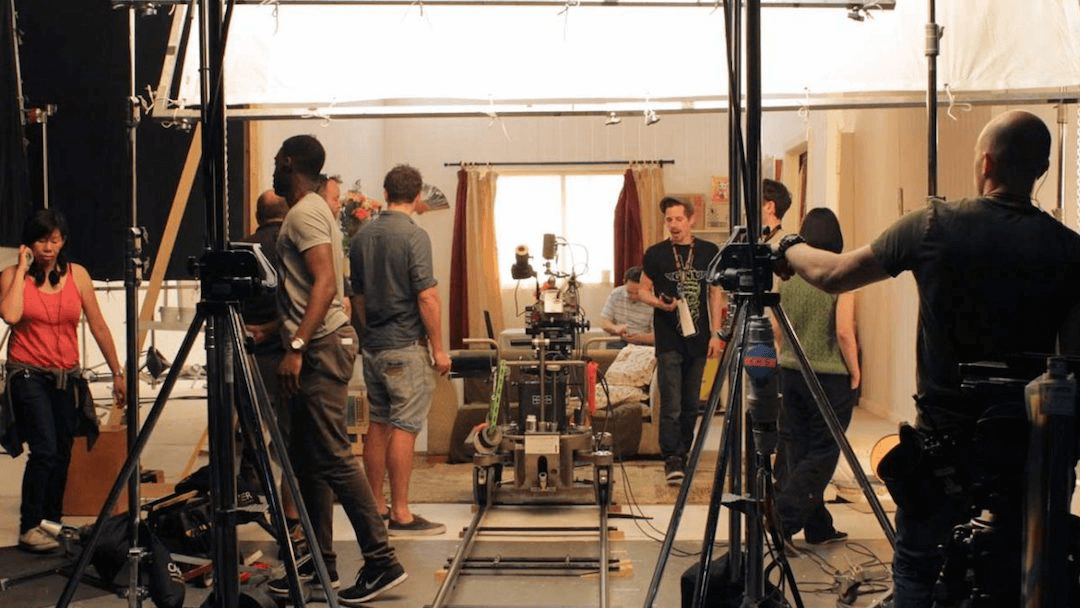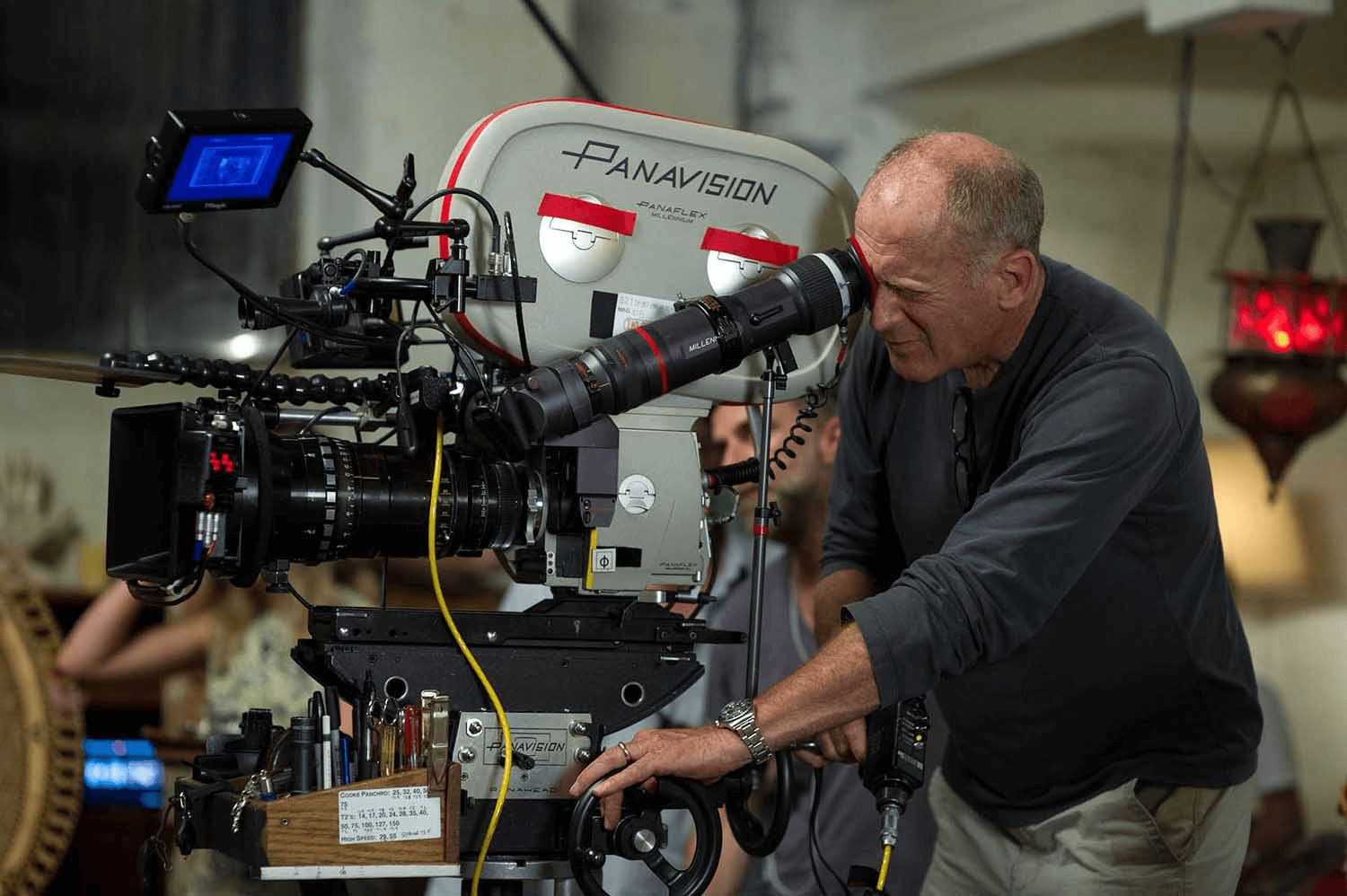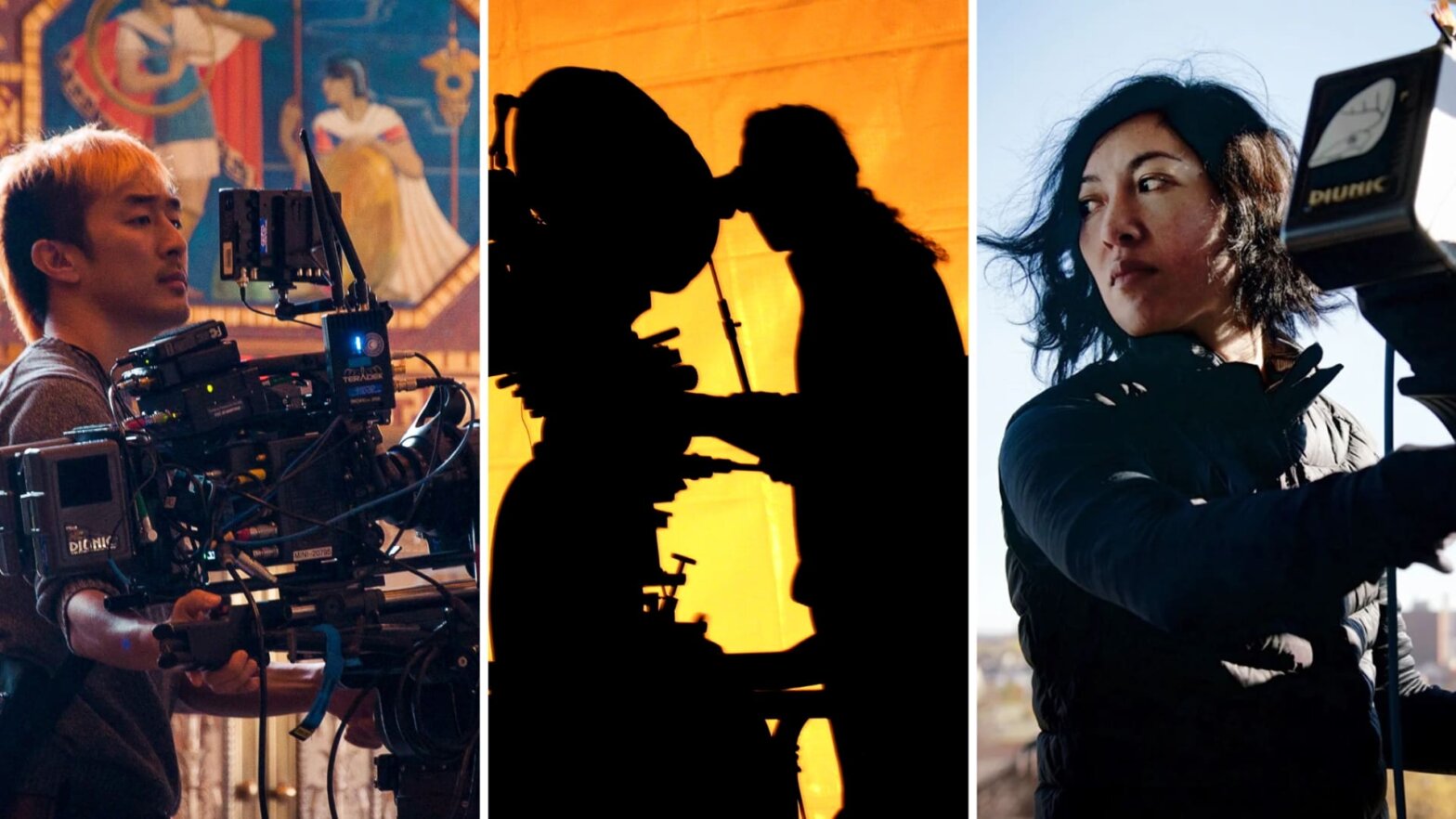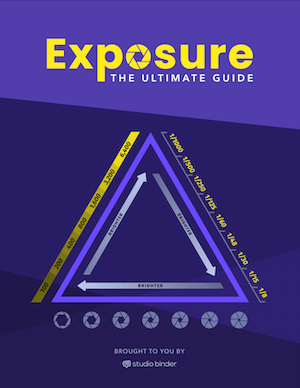As an inherently visual medium, cinema massively depends on the craft of cinematography. And behind brilliant cinematography is a brilliant cinematographer. As a role that is quite literally behind the camera, the cinematographer’s role is often misunderstood. What is a cinematographer and what do they do? In this article, we’ll provide some clarity on what a cinematographer is, what they are responsible for, and the steps you can take to become one.
What is a cinematographer in filmmaking?
A quick cinematographer definition
Cinematographers are generally known as the person behind the camera. However, there is much more to a cinematographer than simply managing the camera’s direction and shots. To find out more on the role, let’s take a look at the cinematographer definition.
CINEMATOGRAPHER DEFINITION
What is a cinematographer?
A cinematographer, also called a director of photography or DP, is responsible for the lighting and camera work in film and television. A cinematographer works closely with the director to determine how the aspects of cinematography such as lighting, camera angles, camera movement, and camera staging can best tell the story of the film.
Cinematographers are the head of the camera department. They direct and supervise the work of the 1st AC, 2nd AC, camera operators, gaffer, and lighting crew to ensure they all know how to execute the director’s vision.
Although the cinematographer should primarily work to bring the director’s vision to life, a great cinematographer brings new and creative ideas to the table that best tell the story of the film.
What does a cinematographer do?
- Collaborates with the director on the visuals
- Prepares shot lists and storyboards
- Directs camera and lighting crew on set
Cinematographer duties
What does a cinematographer do?
The list of responsibilities of a cinematographer is extensive and dependent on the various phases of production. Let’s take a look at the various duties a cinematographer takes on throughout the production of a film.
Collaborate with the director
During pre-production, a lot of time is spent between the cinematographer and director deciding how to visually tell the story of the screenplay.
Typically, the director will already have some visual ideas for the cinematography. The DP will help elevate and bring these ideas to life and bring their own creative ideas to the table as well.
In this video by In Depth Cine, you’ll learn more about the role of the DP in relation to the director. They also analyze a case study between the Coen Brothers and how they collaborate with Roger Deakins.
Coen brothers and Roger Deakins collaborating
Once the DP and director have created a comprehensive game plan for the film, the cinematographer is responsible for organizing these ideas.
Scout locations
When a location scout is scouting locations, the cinematographer and production designer are often involved if not on the scout themselves. Get an inside look at how the DP and other roles are involved in a location scout in the video below.
Location Scouting Explained • Subscribe on YouTube
Cinematographers must ensure that the locations are not only possible to shoot in, but the best location for a scene. They must also come up with creative ways for shooting at a location. They can help determine if a shot or scene requires an alternative plan, like shooting in a studio instead of a practical location.
Pre-visualization
Pre-visualization is the process of visually mapping out the shots of a film and how they will be executed. While this step is sometimes carried out by a director, is almost always carried out by or with the cinematographer.
The most common tools for pre-visualization in film are storyboards and shot lists. To better understand the value and process of pre-visualization, check out this episode of our series, Making It. In this episode, we take a look at shot listing and location scouting and how the two inform each other.
What is a Cinematographer Role in Location Scouting? • Subscribe on YouTube
As the DP creates a storyboard and shot list, they will also decide what types of lenses and types of camera gear will be needed to achieve each shot.
Collaborate with other departments
In addition to the director, cinematographers heavily collaborate with other departments. The first would be the production designer. The production designer is the head of the art department and oversees how a set is designer, built, and dressed.

What is a cinematographer doing on a studio set
Since everything the production designer creates will fall within the frame of a cinematographers shot, the two collaborate heavily. Whether that be special set design like fly away walls to place a camera, practical lighting, or windows, communicating between the two is key.
Production
When the days of production finally come, the cinematographer is the head honcho of all things camera and lighting. They execute the game plan, direct and supervise the 1st AC, 2nd AC, camera operators, and gaffer to execute the vision for every shot.
While some cinematographers work behind a monitor and direct a camera operator, most of the best cinematographers in the industry operate their own camera to have complete control of the shot. Take a look at this behind the scenes footage of cinematographer Robert Richardson behind the camera of Django Unchained.
What is a Cinematographer? Django Unchained BTS
Of course, not everything goes according to plan during production. A huge responsibility cinematographers have on set is to continue to work with the director to find creative solutions to any problems they might face or changes they want to make at the last second.
Post-production counsel
Finally, once everything is shot and production moves into post-production, the cinematographer does not completely hop off the project. They typically remain available as counsel to colorists or editors primarily for color grading.
Since they typically shoot with a specific color scheme and grading in mind, cinematographers should remain available for second opinions or direction.
Related Posts
Skills needed for cinematography
How to become a cinematographer
If the role and responsibilities of a cinematographer sound exciting to you, you may be wondering what the steps are to becoming one. Although there is no concrete path to becoming a successful cinematographer, there are a few ways to start to blaze your own trail.
Seek higher education
The very first thing you’ll want to do when pursuing a career as a cinematographer is to seek higher education. This can be achieved in a few ways. The first would be enrolling in one of the best film schools or cinematography programs you can find at universities. While these can be incredibly valuable, they can also be quite expensive.
Another, cheaper, option is utilizing online film education resources such as the StudioBinder blog to learn about the craft of cinematography. If you’re wondering how to start here are a few fundamental starting points.
Learn how a camera works
Learning cinematography involves learning about the technical side of the craft, mainly how a camera works. Depth of field, shutter speed, and, of course, the exposure triangle are such aspects. You can also download our free e-book The Ultimate Guide to Exposure for a deeper dive in how these elements work together to capture and properly expose images.
Free downloadable bonus
FREE Download
Ultimate Guide to Exposure
The Exposure Triangle is something every photographer and cinematographer needs to master. Download our FREE e-book to get in-depth explanations and tutorials on topics like aperture, ISO, shutter speed, and how to balance these settings to nail perfect exposure every time.
Check out this video on another essential camera function, the aperture, and how it can be used in visual storytelling.
Ultimate Guide to Camera Aperture • Subscribe on YouTube
Learn how to light
In addition to understanding how a camera works, you should also learn how to light. This entails learning the fundamentals of lighting such as the 3-point lighting setup as well as how to develop your eye to create the lighting schemes you desire. If you are just learning to light, here are some tips from Roger Deakins on how to get started.Roger Deakins on Learning to Light • Subscribe on YouTube
Understand camera staging and movement
Lighting is a vital part of cinematography. The other vital component is camera staging and movement. Camera staging involves understanding the function of different camera shots and angles. Every camera angle has a different type of effect on an audience.
Check them out in our video breakdown of camera angles below.
Ultimate Guide to Camera Angles: Every Camera Shot Explained • Subscribe on YouTube
In addition to camera angles, different types of camera movement is becoming more prevalent than ever with advances in different types of camera gear and technology. Understanding the effect camera movements have on an audience is essential for any aspiring cinematographer.
Every Camera Movement Technique Explained • Subscribe on YouTube
Spend time on set
One you’ve learned about cinematography techniques and theories, it’s time to get to work. Getting on set might mean working as a grip, camera operator, gaffer, or 1st AC.
Spending as much time on set will not only expand your network, but you will also be able to watch and learn how other filmmakers and DPs work.
Build your cinematography reel
One of the most important things for a cinematographer to have to get work is an updated online cinematography reel. This reel will allow you to showcase your best work to any potential employers. For more steps on how to make your demo reel, check out the video below.
What is a cinematographer reel?
If you’re just starting out, you may want to consider starting by working for low rates or for free as a cinematographer to get started and build your reel.
Cinematographer salary
How much do cinematographers make?
As you can see, cinematographers are responsible for a whole lot in the production of a film. So much are they making for their work? This is a difficult question to answer. Cinematographers are inherently freelancers working gig to gig so salary will vary greatly based on experience.
According to Glassdoor, the average cinematographer salary in general ranges from $35K to $95K per year.
The range for an experienced cinematographer is typically anywhere between $5,000 to $30,000 per week. Keep in mind the higher range salary for cinematographers that are known in the industry.
Be prepared to start your cinematography career working for lower rates like a few hundred dollars per day. The more experience you get, the more you will be able to charge for your work.
Related Posts
How to become a cinematographer
Find cinematographer jobs
If you’re just starting out, it may be difficult to find cinematography jobs with little experience. The best course of action is to start by gaining experience and building a reel. This might entail working for low rates or for free on student films, indie films, gigs on Craigslist, or through the network you build.

Working cinematographer
Brand yourself as a cinematographer with an online updated cinematography reel. Work other gigs as 1st AC or cam op on a rather low key scale so that you can land more gigs as a cinematographer.
Once you start working and building your network, most of your job opportunities will come from referrals. Otherwise, check sites such as Indeed, GlassDoor, and Backstage to find more cinematography opportunities.
Up Next
Discover more filmmaking roles
Cinematographers are an integral part of the filmmaking process. To continue through our series of the various filmmaking roles and positions, you can explore similar jobs like director, producer, or camera operator. Or you can jump over to our Film Crew Index to browse the entire range of filmmaking roles. Understanding what everyone’s role on a film set is will help make you a better overall filmmaker and a more efficient crew member.
Up Next: Explore more crew positions →
Showcase your vision with elegant shot lists and storyboards.
Create robust and customizable shot lists. Upload images to make storyboards and slideshows.

